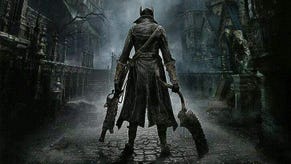Performance Analysis: Bloodborne
UPDATE: Multiplayer gameplay incurs a performance hit unseen in single-player mode.
UPDATE 28/3/15 10:40am: Our Bloodborne analysis is now complete, culminating in a new piece published today comparing the technology of the PS4 exclusive with the upcoming Dark Souls 2 remaster. Our tests reveal that playing Bloodborne in multiplayer mode can impact frame-rates significantly, resulting - at worst - in sub-20fps gameplay. Here's the video, but check out our full analysis for more insight.
UPDATE 26/3/15 2:35pm: Sony says that a new patch is in development to address Bloodborne performance and loading time issues, but in the meantime, we've compiled more loading data across a series of different hard drive technologies. If you're thinking of upgrading your drive anyway, and you're a committed Bloodborne player, our findings may help you to choose the kind of drive that offers the best mixture of value and performance.
Original Story: It's here at last. For anyone yet to pick up a PlayStation 4, and in particular fans of the Souls series, Bloodborne's release today could mark a justifiable tipping point. Having edged our way through the opening Yharnam city area, early impressions suggest another genuine triumph by From Software - and we can now provide a spoiler-free analysis of what's in store. The team's beautiful, horror-inflected world is no doubt a high point, but as with its previous games, there are also obvious technical issues that go alongside its ambition.
And where better to start than the beginning? Below is a lengthy, ten minute frame-rate analysis, taken from the first moment we're set loose with a saw-cleaver. Barring a few tactical cuts (to spare you the lengthy loading screens between deaths), the video runs more or less in sequence right up to the first major boss. Understandably, this is a series that sells on its mystery - but a deep slice of this single area tells us much about where Bloodborne stands tall, and where it falls short.
Running with update 1.01 (weighing in at 2.69GB), the day one patch is essential. Game performance and stability is improved according to its patch notes, and it also adds the game's crucial multiplayer features. However, in line with embargo conditions set to press, we're advised by Sony to avoid online play up to release, meaning our frame-rate tests run without any potential strain of co-op play.
So what's the story? Well the bad news is quite simply that, despite implementing a 30fps cap, Bloodborne struggles to run at a smooth frame-rate. Across the breadth of our tests in both Central Yharnam and the Hunter's Dream hub area, genuine drops are infrequent, but a factor that drags performance down to brief lows of 24fps. Rolling through Havok-based destructible objects (which populate the world in incredible number this time), attacking too many townsfolk at once, and also the use of alpha transparencies are to blame. Essentially, it's the usual culprits for this series.
But this alone isn't a major issue. Such drops show a 60fps target was always a stretch for a game running with this level of detail - the world filled as it is with a staggering density of objects. Every new area is cluttered with points of interest, from coffins twisted in chains, looming gargoyles, derelict wagons and crooked iron fences. It's a richly bleak sprawl set on cobblestones, tightly wound, and yet its vistas broad enough to show your small place in the city.
This high level of geometry is unlike anything we've seen from the studio before. As ever, level-of-detail (LOD) transitions are often too discrete to catch by eye, with the worst occurring for just a split-second on loading a new area. There are twists and turns that catch the engine off-guard too, but for the most part it streams in assets without a sweat.
And yet something is awry when playing Bloodborne. Its sub-30fps frame-rate drops may be infrequent, but on close analysis the bigger issue here is in its frame-pacing. As it turns out, From Software's implementation of a 30fps cap means that, as promised, we do get an average refresh at that number near-constantly throughout Yharnam city. The problem? As we've seen with the launch builds of Need for Speed: Rivals and Destiny, an incorrect ordering of frames can cause a nasty stuttering to motion.
Though its 30fps average is technically correct, Bloodborne often produces two unique frames followed by two duplicates - rather than one after another - creating a perception of frame-rate drops throughout. It's not smooth in motion at all as a result, and frame-time updates swing erratically between 16ms and 66ms - and sometimes higher. It's an unfortunate oversight by From Software. However, we have seen both Bungie and EA Gothenburg react to the issue in each case, correcting their games soon after launch. We hope this will be the case for Bloodborne as well.
Bloodborne's other pending issue is its loading times. Longer than any Souls title before it, reviving at a lamp in Central Yharnam takes between 40-45 seconds - a patience-testing number given the frequency of death in this game. It's also a nuisance due to the game's hub-world structure, where each level loads from the Hunter's Dream area, which in itself takes 12 seconds to load. The obvious question is to what extent upgrading to an SSD might solve the issue. We gave this a test, swapping out the stock PS4 drive for a Sandisk Extreme Pro 480GB SSD, and find that loading times are reduced by around 25 per cent overall.
The SSD upgrade has a cumulative effect. After dying over and over, plus warping back and forth, a 25 per cent saving on the time spent looking at the loading screen could seriously add up by the time the game is complete. It also makes each of the (many) losses a bit easier to take; the last thing we want is a lengthy wait for another shot at a tricky section, and this upgrade at least softens the blow. It doesn't pull it back in line with Dark Souls titles' turnaround, which tended to reload within 10-20 seconds on PS3. However, until From Software swoops in with a patch to optimise this aspect, upgrading your PS4's to an SSD is easily the best option for a fresh Bloodborne playthrough.
| Bloodborne Loading Times | Stock PS4 500GB HDD | HGST 7200rpm 1TB HDD | Seagate 1TB SSHD Hybrid | Sandisk Extreme Pro 480GB SSD |
|---|---|---|---|---|
| First Floor Sickroom | 36.7 | 31.5 | 32.6 | 26.6 |
| Central Yharnam | 41.1 | 35.3 | 33.5 | 29.8 |
| Respawn at Central Yharnam | 44.4 | 37.5 | 33.9 | 31.9 |
| Great Bridge | 35.1 | 30.9 | 28.0 | 26.8 |
| Tomb of Oedon | 30.0 | 27.8 | 24.8 | 22.7 |
| Cathedral Ward | 48.3 | 39.2 | 36.6 | 33.2 |
| Old Yharnam | 45.8 | 38.3 | 36.5 | 31.0 |
| Respawn at Old Yharnam | 53.5 | 44.7 | 39.0 | 36.8 |
| Return to Hunter's Dream from Old Yharnam | 12.1 | 11.1 | 10.4 | 9.6 |
UPDATE 26/3/15 2:35pm: It's fair to say Bloodborne's loading times are too long, but you needn't fork out for an expensive SSD to chop them down to a more manageable length. Our updated table above shows that a hybrid SSHD brings a cost-effective gain in loading speeds for each area without the crippling price penalty of a full SSD.
Above, we've expanded our test range across more areas, where we see Old Yharnam particularly suffering. This lasts as long as 54 seconds for each respawn on the PS4's stock HDD, making any death in this area particularly punitive. By comparison, a 1TB SSHD brings that number down to 39 seconds, while an SSD shaves it a little further to 36.8 seconds. The PS4's stock drive is a 5,400rpm model with slow seek times that delivers the worst results. Next best is the 7,200rpm HDD, which is sharply improved by the SSHD and SSD drives.
Sony states that Bloodborne's loading times are already a focus of an upcoming patch. We'll see just how radical the improvements are, but for now it appears installing the game to an SSHD is a great starting point. For those already considering an upgrade for their PS4 hard drive, it's an option that could kill two birds with one stone. Check out our hard drive upgrade guide for data on more titles - not all games see anything like the improvement found in Bloodborne, which is worth factoring into any purchasing decision.
Putting the frustrating loading times aside, even based on its early stages Bloodborne stands up among From Software's most memorable creations. It's a horror-tinged fantasy that's sure to magnetise Souls fans towards Sony's new machine, despite some technical shortfalls that can frustrate. It may be that these are part and parcel with upholding the amazing scale of its world, but it's very possible a future patch will smooth some rougher points, in particular the unusual frame-pacing. On that note we'll have to wait and see.
Nevertheless the core of the adventure is engaging, with a game design built from the ground up for PlayStation 4 hardware. The bigger story going forward is how its technical direction differs from the upcoming Dark Souls 2 remaster on PS4. On current evidence, both have their obvious advantages, though later areas in Bloodborne will show just how crucial that 30fps cap is in allowing for a more visually complex world design.
Take a look through our Bloodborne walkthrough if you've come unstuck in Miyazaki's latest adventure.
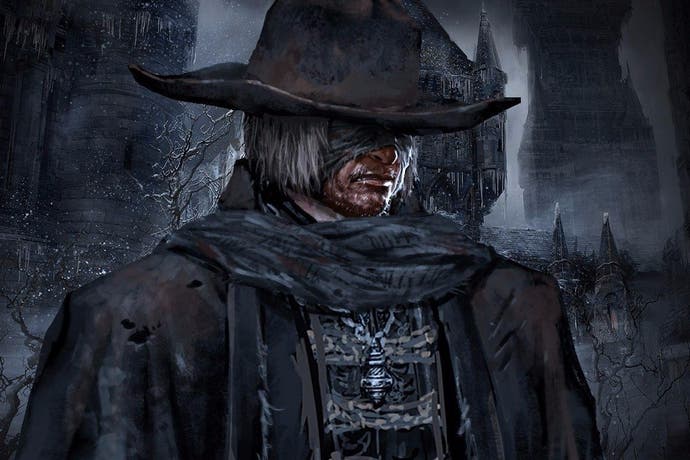







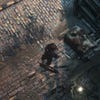
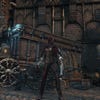
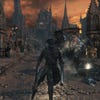

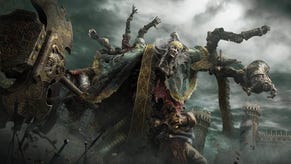

.png?width=291&height=164&fit=crop&quality=80&format=jpg&auto=webp)

